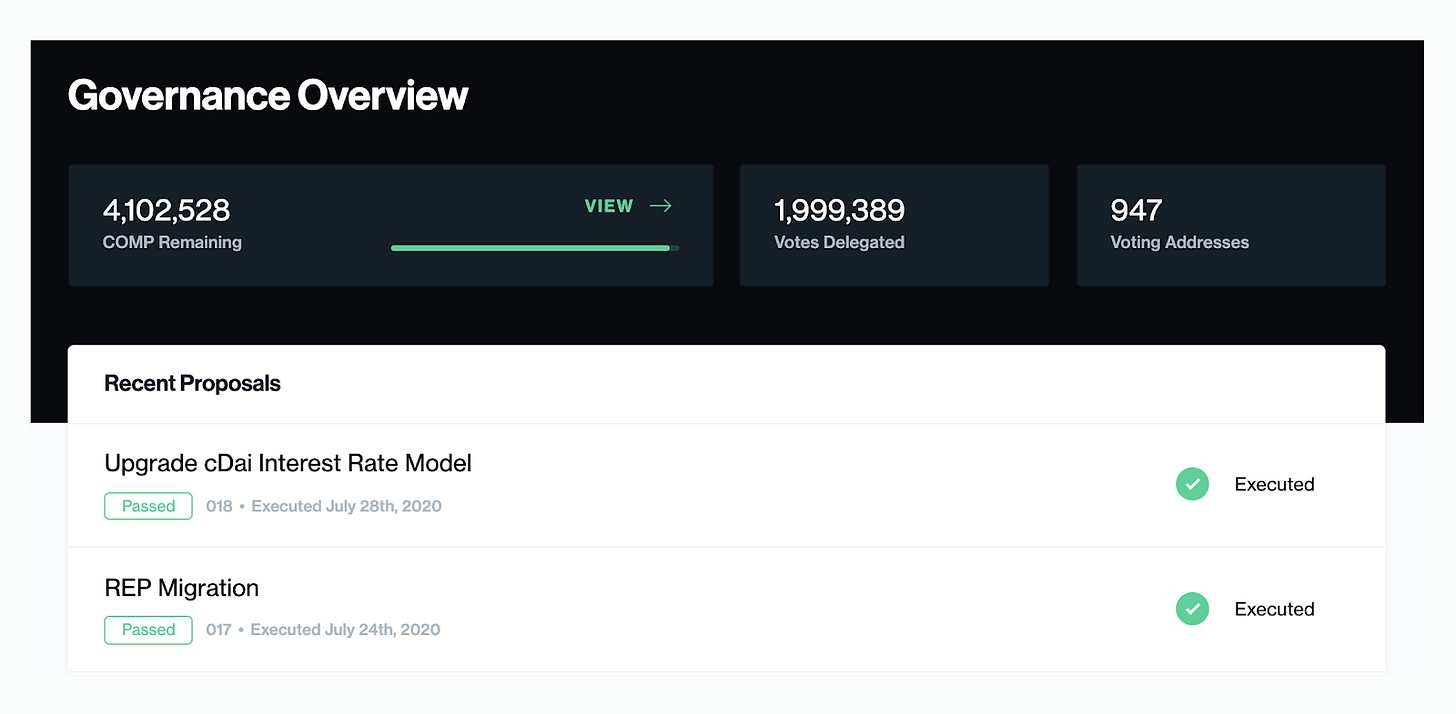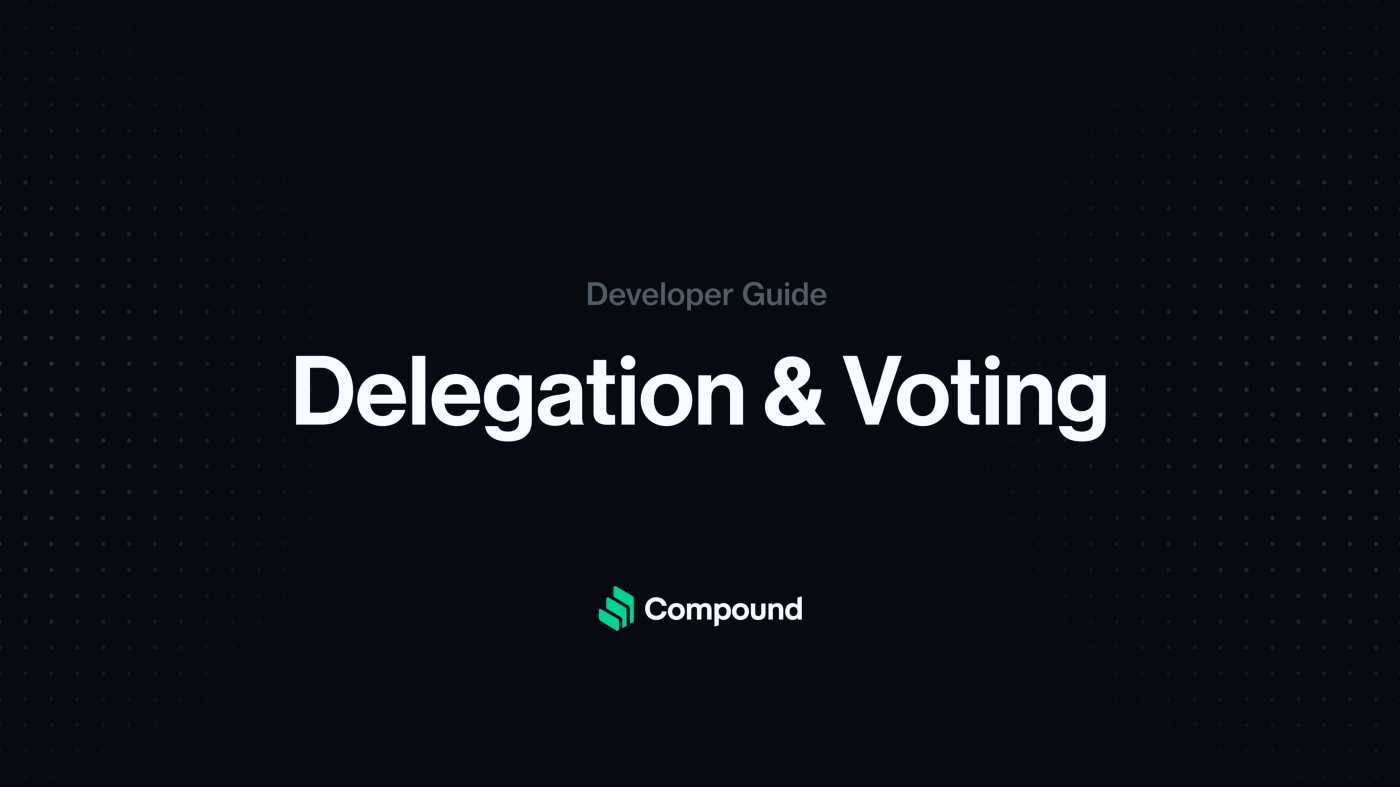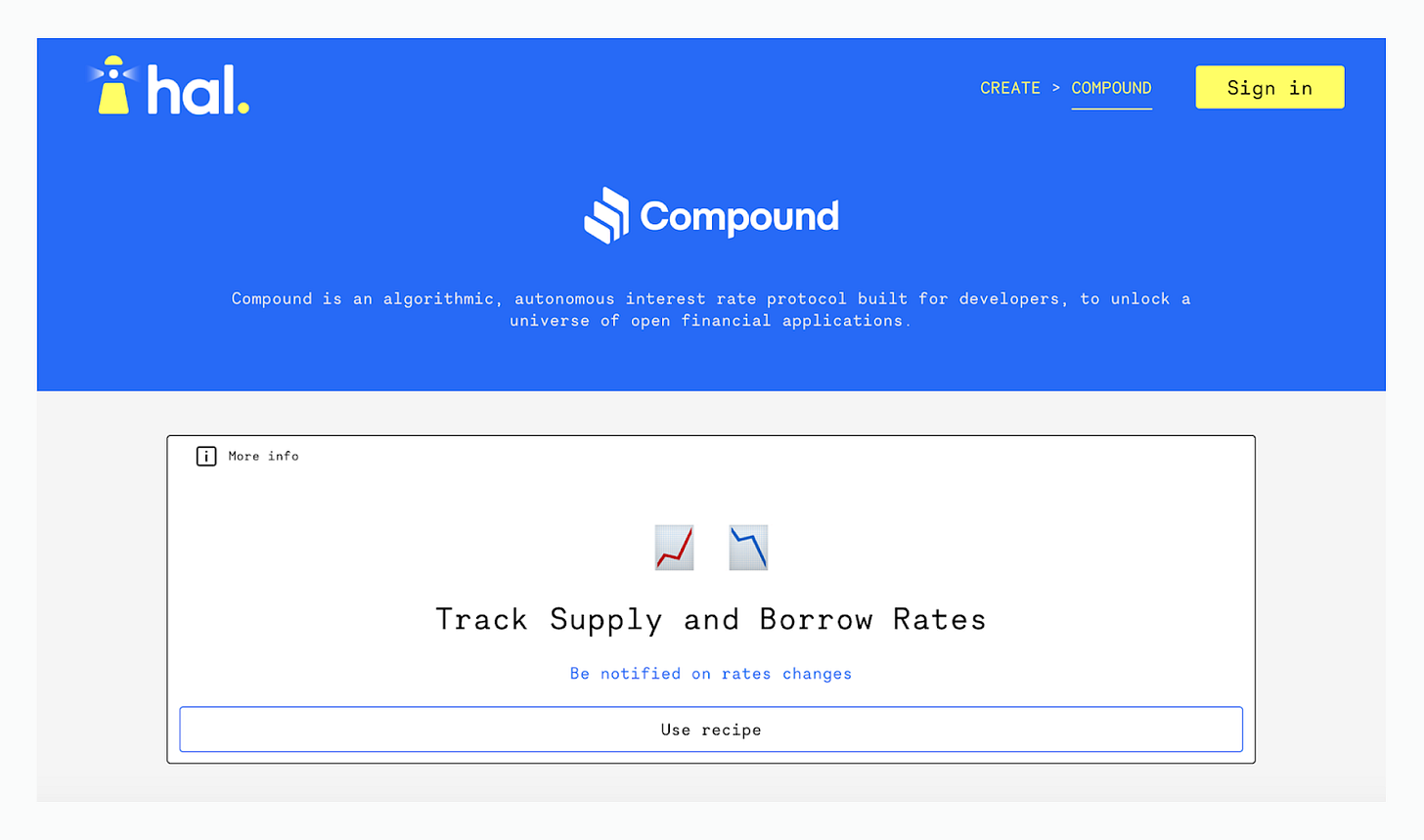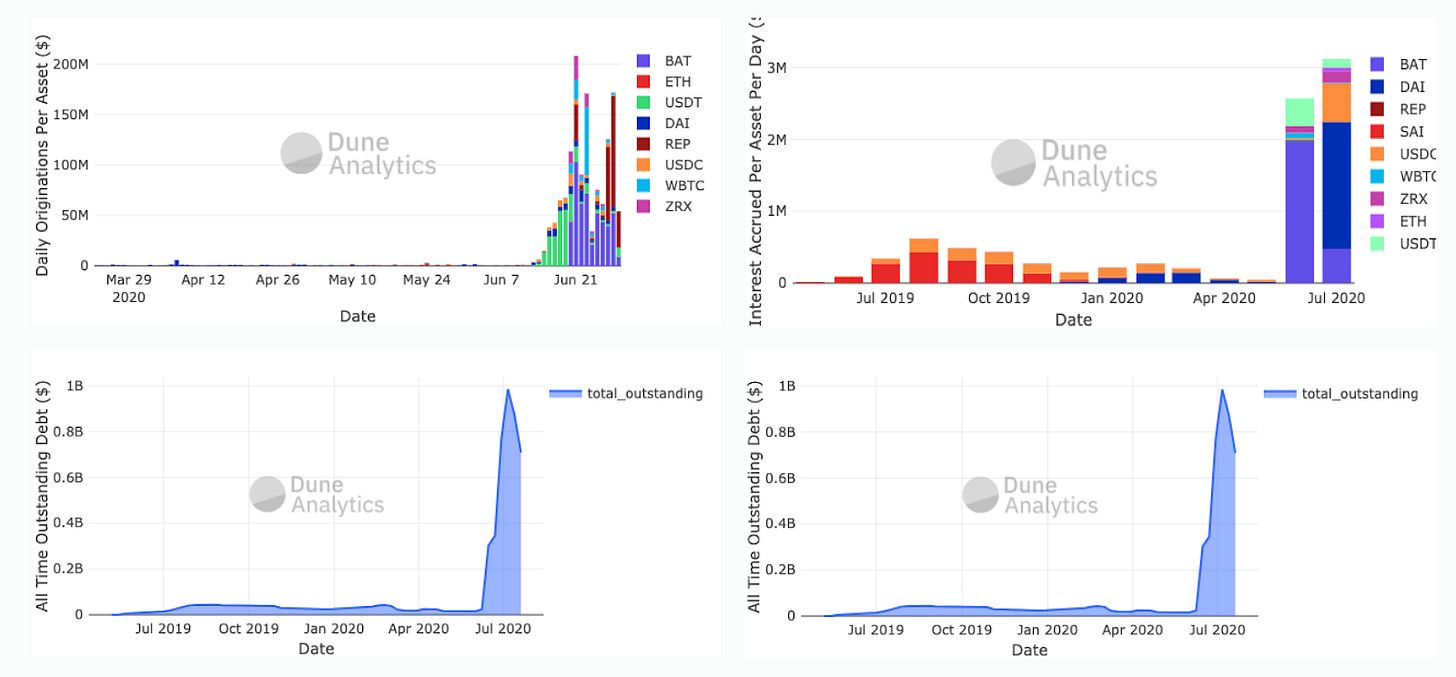Highlighting the best of Compound & the DeFi ecosystem. For more updates, join our community on Discord, Twitter, and Comp.xyz.

Two new proposals have passed through Compound’s governance system since our last newsletter, with both passing almost unanimously. Below, we highlight each proposal and the broader significance for users and stakeholders of the protocol.
Proposal 17: REP Migration
Status: Executed July 24th, 2020
Proposer: blck
Voting Results: 757,201 For and 1 Against
Summary: Ahead of the launch of Augur v2 on July 28th, blck has initiated a process of deprecating REPv1 on Compound. The proposal disincentivizes the use of cREP by disabling supply and borrow functionality, disabling COMP distributions, and setting the reserve factor to 100%. Users are encouraged to wind down outstanding cREP positions, as a potential fork event is likely in the near future. Read the community discussion on the proposal here.
Proposal 18: Upgrade cDai Interest Rate Model
Status: Executed July 28th, 2020
Proposer: Dharma
Voting Results: 895,108 For and 1 Against
Summary: Following a previously failed proposal (012) earlier in July, this proposal from Dharma makes three changes to the interest rate model of cDAI: Increase the supply APY from 15% to 25% at 100% utilization, change the utilization rate ‘kink’ from 90% to 80%, and increase the slope of the interest rate curve before the ‘kink’ (gapPerBlock from 2% to 4%). Read the community discussion on the proposal here.
Join the Compound governance discussion on Comp.xyz, or delegate your COMP voting rights to the delegate of your choice. Leading delegates can be seen on the Delegate Leaderboard.
Delegation and Voting with EIP-712 Signatures

Compound protocol governance features EIP-712 signature functionality, which enables users to sign a delegate or vote transaction for free, so a third-party can and write the transactions to the blockchain for them (and pay the gas fees).
This functionality is powerful. It enables, for example, third-party protocol politicians to request signed transactions from other COMP-holders, and aggregate voting power to have a greater influence on Compound governance.
To learn how to build a user interface that takes advantage of this functionality, see the developer guide for Delegation and Voting with EIP-712 Signatures on the Compound blog.
HAL Q&A

What does HAL do?
HAL is a 1-click-setup IFTTT for Ethereum, featuring dApp-specific integrations with webhooks, Discord, Slack, Telegram, Twitter, and emails. Using new Recipes you can create and share your favorite triggers in a new and collaborative way! We also created the @compoundgovbot on twitter, which automatically tweets when there are on-chain events related to Compound's governance system.
What went into building the initial app?
The seed is basically what we express in the Gluing Manifesto. We strongly believe that the best way to leverage the full potential of decentralized technologies is by designing an economic system based on a tight interaction between decentralized and centralized components where developers and companies judiciously decide how to mix them depending on which components need to be trustless or not. There's a gap between decentralized and centralized systems that can be filled by gluers, entities that are logically, architecturally, and politically centralized but are not custodial, are replaceable at any time, and can fail. And here's HAL, the first version of a gluer connecting both worlds!
What are the next steps and goals for HAL?
In the short term, we are running a 30-day sprint to create new automation to make Ethereum dApps easier for end-users, and integrating more Apps. Along with that, you are going to see new login mechanisms (e.g. using Metamask) and the on-chain automation off-chain aided featuring Gelato Finance and Gnosis Safe. In the meanwhile, we are thinking how to decentralize HAL and maybe a token could be part of the story.
What does your tech stack look like?
Our stack is 3-tier, the app, the API layer, and the event engine. The app is based on React and is the point where we invested much effort in the last weeks, to offer a great UX for our users. The API layer is based on Node.js and it's serverless, in this way we can be fast on implement changes and eventually move back and forth logic from frontend to the API. In addition, it helps to lower costs and don't bother too much about Sysops (thanks to AWS). The event engine is written in Go using a queue architecture and it's where the magic happens aka your recipes/triggers are interpreted and on match execute the actions you set.
What other ideas do you have that devs can use with Compound to build something awesome?
Compound is the lego of DeFi. We already see many great products built on top of it (e.g PoolTogether, IdleFinance) and clever usages (e.g. Curve). Options are trendy right now and I would like to see some implementation which uses Compound as one of the underlying protocol to realize this.
Emiliano Bonassi, Founder, Hal.xyz
Markets Update

Current supply on the Compound protocol is at $1.9B from ~33k unique addresses. In the past seven days, approximately $2B (gross) was added to the protocol, in 9.1k transactions. 72% of this volume was DAI, 16% was ETH, 8% was USDC, and 2% was USDT. DAI supplied to Compound is currently at $1.2B, marking the first time in the protocol’s history that a single market has passed the billion-dollar threshold.
Open borrowing is at $1.2B from 4.7k unique addresses. In the past seven days, approximately $1.4B (gross) was borrowed from Compound in 3k transactions. 89% of this volume was DAI, 8% was USDC, and 1% was WBTC.
For live figures please refer to our Markets page.
Links & Discussions
Bloomberg reports on recent trends in DeFi and liquidity mining strategies.
In the seventh edition of Coinbase’s Around the Block, Justin Mart analyzes DeFi sector growth, Ethereum network congestion, and DEX popularity.
Coindesk journalist Brady Dale looks at the major events in DeFi’s short but promising history.
Forbes journalist Clem Chambers reports on how DeFi has impacted the Ethereum community.
Twitter user @Lsquaredleland unveils his re-skin of the Compound governance interface.
Compound Labs CEO, Robert Leshner, joins the Braintrust podcast to discuss the Power of Ownership and Cryptonetworks.
Compound Labs CEO, Robert Leshner, joins the Base Layer podcast to discuss Compound and DeFi basics.
Tweet of the Week


